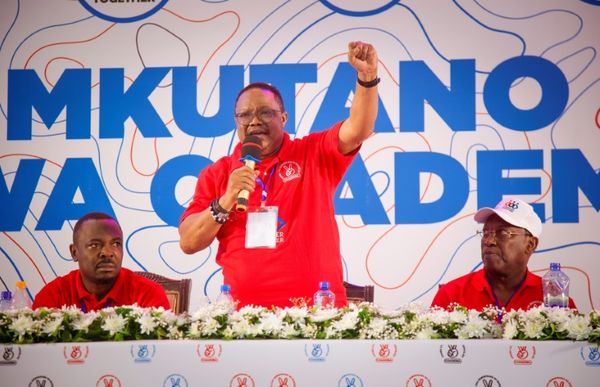Dutch police fired a gun at a 16-year-old boy in a tractor at the end of a day filled with farmers protesting against new government plans to cut nitrogen emissions.
Not long after the incident took place in the province of Friesland, police stopped the young protester and arrested him for attempted manslaughter, claiming he tried to drive his tractor into police cars.
A day after the arrest, footage of the incident went viral.
Videos of the police officer shooting at the tractor's cab, nearly missing the boy, have generated hundreds of thousands of views, showing no sign of the tractor attempting to target police cars.
Outside of the police station, dozens of farmers, including forty tractors, demanded the detained boy's release.
The next day he was released and, on Thursday, it was announced that no further prosecution would be pursued.
Already the Frisian blond farmer's son has become the face of a movement.
So how did it get to this? Why are farmers protesting in every possible way accompanied by a huge fleet of tractors, causing chaos throughout the country?
Nitrogen emissions need to be reduced by 50 per cent by 2030
In many parts of the Netherlands nitrogen emissions need to be reduced by 70 per cent, according to plans announced by the Dutch government at the start of June.
The 70 per cent would concern 131 areas near vulnerable natural areas, in an attempt to let those protected environments recover.
Behind that requirement is the fact that nitrogen emissions can cause acid rain and fertiliser washed into waterways can be a threat to marine life and an excess of nitrogen compounds — such as ammonia — affects the biodiversity in nature reserves.
Farmers in the most vulnerable areas are given the options invest in sustainability or move away.
In reality, not all farmers can continue with their businesses, Christianne van der Wal, Minister of Nature and Nitrogen, said.
The government's plans are meant to reduce the total nitrogen emissions by 50 per cent by 2030.
For the farmers, that means that their emissions need to be reduced by 40 per cent, resulting in a possible 30 per cent decrease in total livestock being kept in the Netherlands.
Provincial governments have been given one year to work out plans to achieve this goal.
From highways to supermarkets
The plans have sparked immense rage from farmers and their allies throughout the country.
Frustrated, angry and fearing the loss of their livelihoods, farmers have taken up arms and demonstrations have taken place in many different forms and locations.
A dozen tractors protested on the famous Dam Square in Amsterdam, carrying banners saying: "The war has begun and we will win."
Others took to highways to express frustration, with tractors driving at a walking pace causing large traffic jams.
Ms Van der Wal's private residence was another target of protests, with dozens showing up, police cars being destroyed and a tank filled with manure being emptied near her home.
On Friday, Schiphol Airport warned travellers to take the train, as farmers planned to block airport access.
Although the farmers did not follow through, Schiphol Airport — already struggling with staff shortages — was in chaos, anyway, with many travellers arriving hours before their departure after the warnings.
In other places, hay bales and stacks of tyres have been set on fire beside roads, with authorities warning drivers of the smoke which could cause obstructed views.
In Arnhem, a city in the east, farmers and their tractors gathered in front of a provincial governmental building.
The same happened in front of Dutch public broadcaster NOS.
Another target was distribution centres, which were not accessible in more than 15 locations.
With farmers blocking access, supermarkets were left with empty shelves and consumers with empty shopping trolleys.
Although a number of the blockages have been ended by council officers and police, there are still at least seven centres being obstructed.
Supermarket advocate CBL has called for a stop to the disruptions because many distribution centres also supply hospitals and other healthcare institutions.
With another week of protests, institutions braced themselves and services such as the Dutch Railways operator sent out warnings for disruptions.
Because there is no official planning or program by the farmers, there is no way of knowing what kind of protests will be taking place, making it hard for authorities to prevent blockages or traffic jams.
So what happens next?
Predicting what happens next is difficult, because the demonstrations are not coming from one organised group.
Mark van den Oever — the face of one of the biggest and most radical groups, called the Farmers Defence Force — was asked by a Dutch newspaper when the protests would stop.
"When all this nonsense about nitrogen stops," he said.
Experts say that farmers feel unheard and plead for better communication and, if possible, concrete perspectives.
More investments on innovation is another solution that is often mentioned.
Dutch agricultural magazine Vee en Gewas says that innovation is more cost-effective than the current plans and there needs be more room for alternatives.







